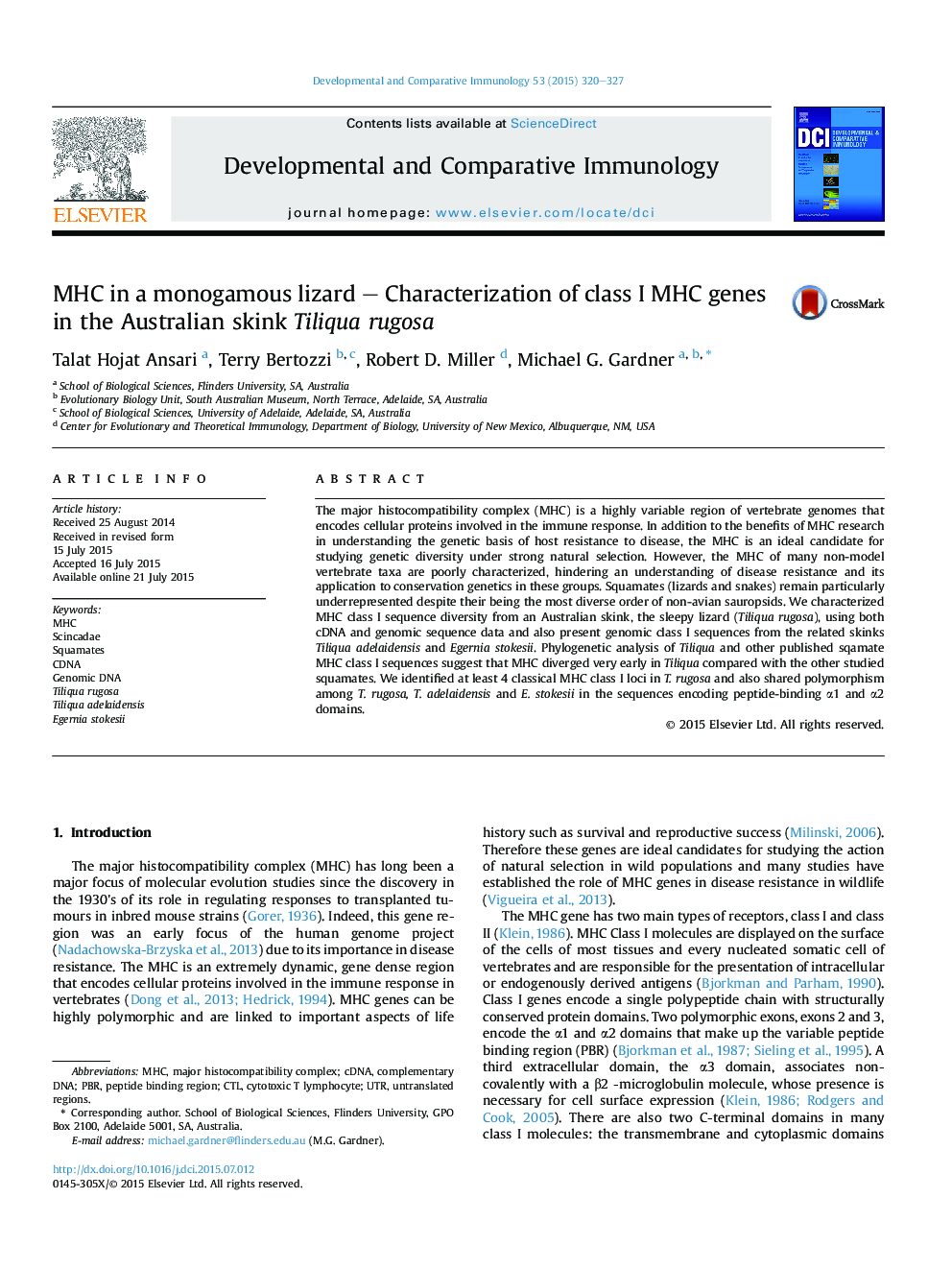| Article ID | Journal | Published Year | Pages | File Type |
|---|---|---|---|---|
| 2428934 | Developmental & Comparative Immunology | 2015 | 8 Pages |
•MHC class I sequences were characterized from an Australian skink, Tiliqua rugosa.•MHC class I sequences from exon 2 to 4 were amplified in T. rugosa.•Primers were successfully tested in related skinks, Tiliqua adelaidensis and Egernia stokesii.•Four MHC class I loci identified in T. rugosa were shown to be Mendelianly inherited.•MHC Class I in Tiliqua diverged very early compared with published squamate class I sequences.
The major histocompatibility complex (MHC) is a highly variable region of vertebrate genomes that encodes cellular proteins involved in the immune response. In addition to the benefits of MHC research in understanding the genetic basis of host resistance to disease, the MHC is an ideal candidate for studying genetic diversity under strong natural selection. However, the MHC of many non-model vertebrate taxa are poorly characterized, hindering an understanding of disease resistance and its application to conservation genetics in these groups. Squamates (lizards and snakes) remain particularly underrepresented despite their being the most diverse order of non-avian sauropsids. We characterized MHC class I sequence diversity from an Australian skink, the sleepy lizard (Tiliqua rugosa), using both cDNA and genomic sequence data and also present genomic class I sequences from the related skinks Tiliqua adelaidensis and Egernia stokesii. Phylogenetic analysis of Tiliqua and other published sqamate MHC class I sequences suggest that MHC diverged very early in Tiliqua compared with the other studied squamates. We identified at least 4 classical MHC class I loci in T. rugosa and also shared polymorphism among T. rugosa, T. adelaidensis and E. stokesii in the sequences encoding peptide-binding α1 and α2 domains.
